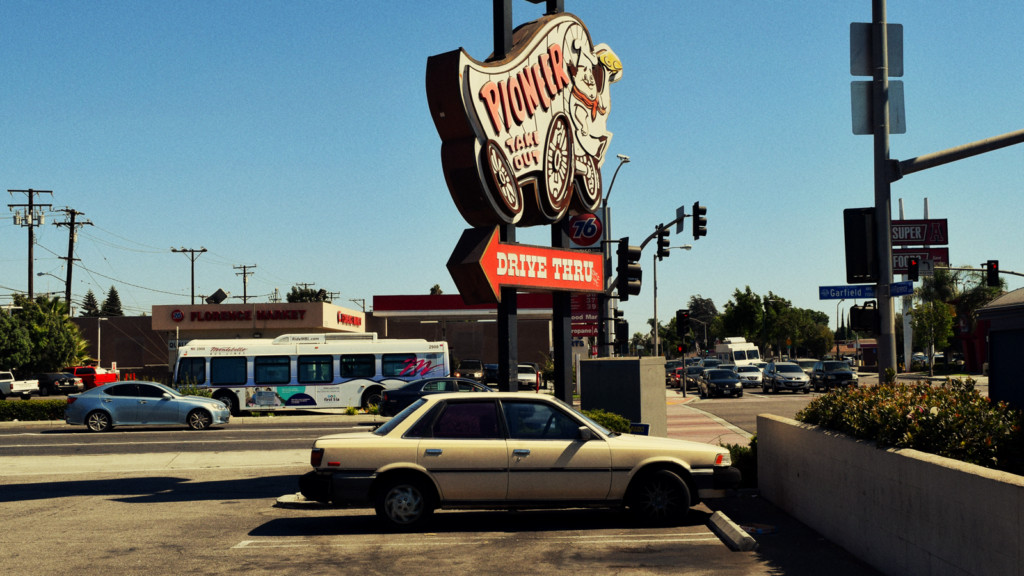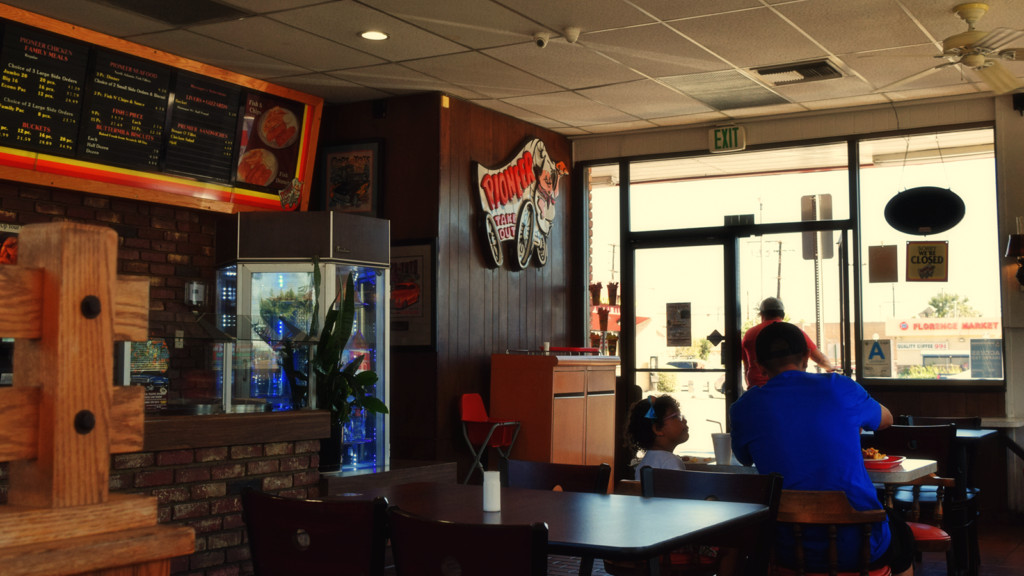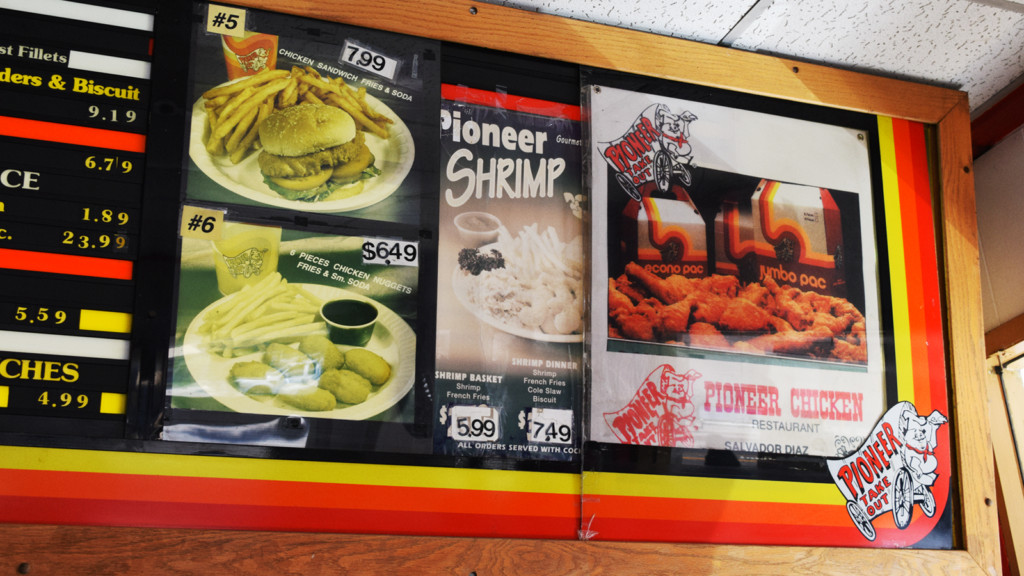“We’re going to Malaysia!” my cousin Brett yelled on the phone. The reason? Kenny Rogers Roasters. While Kenny Rogers Roasters might seem like a distant memory in America, it’s still a thing in Malaysia. This quirky fact led to a deeper dive into the world of forgotten fast food chains, revealing a surprising survivor: Pioneer Chicken. While many once-ubiquitous fast food brands have faded into obscurity in the US, Pioneer Fried Chicken, a Los Angeles original, clings to life in unexpected corners of the world and in a couple of nostalgic locations right where it started.
The quest began with Kenny Rogers Roasters, a chain that sparked a bizarre craving in my cousin. It seemed impossible that the restaurant founded by the country music icon still existed anywhere. A quick Google search proved the unbelievable: Kenny Rogers Roasters thrives in Malaysia, a world away from its American origins. This discovery opened a portal into the past, prompting an investigation into other American fast food ghosts. Arthur Treacher’s fish and chips, once a 70s sensation, still has a handful of locations. The elusive McPizza, a McDonald’s menu item of yesteryear, had stubbornly lingered until recently. Wimpy, a burger joint predating even McDonald’s, is gone from the US but alive and well in South Africa. And then there was Pioneer Chicken, a name synonymous with Los Angeles fast food in its heyday.
Pioneer Chicken. The name conjures images of a bygone era of Los Angeles. Endorsed by celebrities like O.J. Simpson and Kareem Abdul-Jabbar, this fried chicken chain once boasted 270 locations. It was a major player in the crowded Los Angeles fast food scene. But like many of its contemporaries, Pioneer Chicken largely vanished from the American landscape. Or so it seemed.
 Pioneer Chicken chuck wagon sign representing fast food chain
Pioneer Chicken chuck wagon sign representing fast food chain
The internet revealed the first shock: Pioneer Chicken is not entirely gone. In fact, it’s thriving in Indonesia. Under the name California Fried Chicken, the spirit of Pioneer Chicken lives on, thanks to a group of Indonesian students who fell in love with the taste while studying at USC. They took the flavors of Pioneer back home, creating a successful franchise that echoes the original. But closer to home, the biggest surprise was yet to come: two original Pioneer Chicken locations still operate in Los Angeles itself, defying the odds and serving up a taste of history in Boyle Heights and Bell Gardens.
Los Angeles is the undisputed birthplace of car-centric fast food culture. The city’s obsession with speed and convenience shaped the industry, giving rise to McDonald’s and other iconic chains. Bob’s Big Boy, a landmark in Toluca Lake, and the preserved first McDonald’s in Downey stand as testaments to this history. Pioneer Chicken, in its prime, was just as integral to this landscape. Founded in Echo Park in 1962, Pioneer Take-Out, as it was officially known (named after the Pioneer Market next to its original Sunset Boulevard location), quickly became a local favorite. By the late 1970s, hundreds of Pioneer Chicken restaurants dotted California, many in the greater Los Angeles area. The design was classic fast food: ample windows, a compact dining space, a drive-through, and the distinctive sign featuring Pioneer Pete, the jolly chuck wagon cook. The chicken was known for its distinctive orange hue, its unapologetic greasiness, and a satisfyingly loud crunch.
Adding to the experience was Orange Bang, a sugary, citrusy drink, a sweeter and bolder cousin to the Orange Julius. For those who grew up with it, Orange Bang and Pioneer Chicken were an addictive combination, the kind of guilty pleasure that, once removed, leaves a powerful, nostalgic craving. Pioneer Chicken was more than just food; it was woven into the fabric of Los Angeles life from the 1970s through the 1990s. It was nearly impossible to navigate the city without encountering the familiar chuck wagon logo. Television commercials further cemented its presence, with memorable, if somewhat bizarre, ads featuring rotating chicken, demanding children, and the ubiquitous O.J. Simpson, then known for his football prowess and burgeoning acting career. These low-budget, 1970s-era ads, with their unsettlingly empty black backgrounds, have now taken on an almost surreal, purgatorial quality in retrospect.
 Pioneer Chicken menu board showing classic fast food offerings
Pioneer Chicken menu board showing classic fast food offerings
Despite its widespread presence, Pioneer Chicken’s reign was not to last. By 1987, the chain was facing bankruptcy. In 1993, Popeyes, a national fried chicken chain with a different style and flavor profile, acquired the struggling company. Most remaining Pioneer locations were converted to Popeyes, marking the end of an era. While the closure was noted with some sadness in the local press, life moved on. Yet, a piece of Los Angeles’s fast-food identity had been lost. Pioneer Chicken had been a constant, almost invisible, part of the Los Angeles experience, as commonplace as orange streetlights and jacaranda trees. Then, seemingly overnight, it was gone.
Beyond the two surviving restaurants, Pioneer Chicken lives on in an unexpected place: a lyric in Warren Zevon’s song “Carmelita.” The line, “He hangs out down on Alvarado Street, by the Pioneer Chicken stand,” paints a vivid picture of Los Angeles lowlife, a heroin addict’s despair anchored to the mundane reality of a fast-food landmark. This casual mention in a song captured a specific, often overlooked, aspect of the California experience. When Dwight Yoakam performed “Carmelita” at the Hollywood Palladium, the line about Pioneer Chicken drew cheers from the crowd of seasoned Los Angeles punk rock fans, a testament to the chain’s enduring, if understated, cultural resonance.
Stepping into the Pioneer Chicken in Boyle Heights is like stepping back in time. The window advertisement, with its faded 1970s color scheme of dark red, orange, and yellow, promotes specials like the “Econo Pac” and “Jumbo Pac” with photos seemingly untouched since 1979. Inside, the atmosphere is genuinely vintage, a far cry from the faux-nostalgia diners. It’s a real time capsule, dusty and sun-faded, a stark contrast to the rapidly evolving landscape of Los Angeles. The fixtures are original, hinting at a fragile existence where any breakdown could signal the end.
Ordering a leg and thigh, the taste of Pioneer Chicken is a revelation. It’s not Roscoe’s Chicken and Waffles, but the incredibly crunchy breading is strangely addictive. The grease, unapologetically present, is part of the appeal, contributing to the undeniably delicious flavor. The texture is unique, more akin to fish and chips batter than typical fried chicken. It’s distinct and, crucially, not like the often-disappointing experience of Kentucky Fried Chicken.
Driven by a craving for the full Pioneer experience, a visit to the Bell Gardens location followed. This location is noticeably more vibrant and well-maintained. The drive-through was busy, and families were placing large orders. Ordering more chicken and a taste of the elusive Orange Bang, the sugary drink proved less appealing than the greasy, flavorful chicken. Despite the sugary overload of the Orange Bang, the overall experience was, in its own way, magical.
 People ordering Pioneer Chicken at a drive-through window
People ordering Pioneer Chicken at a drive-through window
Los Angeles, despite its reputation for ephemerality, is also a city of enduring memories. While the city struggles to preserve its history against rising rents and constant change, Pioneer Chicken stands as a reminder of a different era. Local institutions vanish regularly, and beloved places can disappear without warning, casualties of relentless capitalism. Pioneer Fried Chicken, in this context, is more than just a fast-food chain; it’s an endangered species, deserving of appreciation and preservation. It’s a tangible link to the Los Angeles of The Rockford Files, a city that is rapidly fading. Pioneer Chicken deserves to be recognized as a historical landmark, like Bob’s Big Boy, rather than being erased and replaced like Du-par’s. The recent recreation of the iconic Pioneer Chicken sign by Quentin Tarantino’s crew for Once Upon a Time in Hollywood, set during the Manson era, underscores this point. Seeing the replica sign sparked immediate nostalgia in passersby, a yearning for a lost Los Angeles.
It’s time to remind people that Pioneer Chicken is not just a memory. It still exists. For a taste of old Los Angeles, a bite of uniquely crunchy and greasy fried chicken, and a dose of fast-food history, the surviving Pioneer Chicken locations are waiting to be rediscovered.
